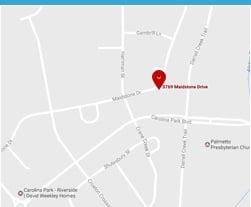DfR Solutions Blog posted an interesting article recently regarding the significance of Digital Image Correlation and how this process benefits electronic device manufacturers. DIC is an optical method used to measure displacements and deformation. Specimens are prepared with a contrasting speckle pattern that can be tracked optically over time as the specimen rigidly moves and deforms.
DIC is an optical method used to measure displacements and deformation. Specimens are prepared with a contrasting speckle pattern that can be tracked optically over time as the specimen rigidly moves and deforms.
This approach has several advantages over a strain gauge or extensometer. One advantage is that DIC does not require contact with the specimen, allowing for uses that might not be possible with other methods. Additionally, unlike other techniques that only measure localized strains, DIC is able to produce full field displacement and strain maps. DIC can be performed with a single camera if only in-plane measurements are required, or with multiple cameras for three-dimensional DIC if out of plane measurements are of interest. Specimen sizes can vary from the micro-scale all the way to tens of meters or larger depending on the cameras and setup.
- Material characterization. DIC can be utilized to characterize material properties such as Young’s Modulus, Poisson's Ratio, glass transition temperature (Tg), and Coefficient of Thermal Expansion (CTE). This is valuable when trying to evaluate candidate materials such as PCB laminates. Solder fatigue is often driven by thermomechanical damage due to CTE mismatches between the package and PCB. Measuring the CTE of the PCB or components can help identify solder fatigue risks due to thermal cycling.
- Test Monitoring. DIC is a powerful tool for in-situ displacement and strain measurements for both monotonic and cyclic testing. The flexibility of the technique allows for monitoring of a wide range of test setups including tensile testing, bending testing and thermal cycling, among others.
- PCB and component warpage is often a concern during reflow soldering. Excessive warpage can lead to poor interconnect formation, solder joint bridging, or component cracking. Warpage measurements made via DIC can help identify warpage as an issue during reflow or compare candidate components and board laminates.
- Finite Element Analysis (FEA). DIC testing can be used to both characterize FEA inputs such as material properties, as well as validate simulation results. Strain gauging provides localized strain values and may potentially miss problematic strain regions that occur in complex assemblies or loading conditions. Full field displacement and strain maps allow for more comprehensive comparisons to FEA results.
- Dynamic Applications. DIC is most commonly employed in static or quasi-static applications. With appropriate setup, DIC can also be used in high speed or dynamic applications such as vibration testing. Cameras with sufficiently high frame rates are typically required, though low speed cameras can be used for certain periodic events with a stroboscopic setup.
Click here to read the full article
Zentech is one of the very few electronics contract manufacturers in the United States that hold the ultimate set of certifications relating to the manufacture of mission-critical printed circuit card assemblies, including ISO:9001, AS9100, DD2345, ISO 13485, IPC 610 Trusted Source QML status, JSTD-001 with Space certification and is ITAR registered.





